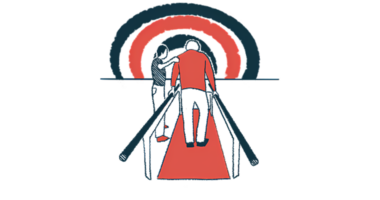Sensors, machine learning used in movement disorder diagnosis
Essential tremor, myoclonus may resemble Parkinson's symptoms

Integrating movement sensors and machine learning approaches may aid a correct diagnosis of movement disorders, including essential tremor and myoclonus, a study in the Netherlands suggests.
Essential tremor is a progressive movement disorder marked by tremors, while myoclonus refers to brief, shock-like muscle jerks. Both can occur during voluntary movements and may resemble motor symptoms seen in Parkinson’s disease, making them challenging to distinguish in clinical practice.
“It turns out that intelligent systems can process increasingly complex data. This significantly improves the speed and accuracy of medical diagnoses,” Marina de Koning-Tijssen, PhD, professor at the UMCG Expertise Center for Movement Disorders, University of Groningen in the Netherlands, said in a center news story. “This is an important step toward personalized care for people with movement disorders.”
The study,”Explainable machine learning for movement disorders – Classification of tremor and myoclonus,” was published in Computers in Biology and Medicine.
A common motor symptom of Parkinson’s is resting tremors, that is, involuntary muscle contractions that cause a shaking movement when the muscles are at rest. Tremors are also the primary symptom of essential tremor, while myoclonus presents as sudden and brief shock-like muscle jerks that result from muscular contractions and relaxations.
The symptoms are similar, and their accurate distinction is crucial for correct diagnosis and treatment. “The treatment of different movement disorders varies greatly. If you have the correct diagnosis, you can immediately start the best treatment for the patient,” de Koning-Tijssen said.
Movement sensors for analyzing movement disorders
Here, researchers used machine learning, a type of artificial intelligence that develops algorithms that can learn from data to identify patterns and make decisions, to distinguish between the two movement disorders and support a diagnosis.
“We use machine learning to analyze the data from movement sensors,” de Koning-Tijssen said. “This allowed us to analyze the movements of patients performing a task very precisely.”
To develop the model, researchers recorded upper body movements in 19 people with essential tremor and 19 with cortical myoclonus performing 21 tasks, using eight movement sensors placed in the upper arm, forearm, and fingers. In cortical myoclonus, muscle jerks are often caused by abnormal activation of the sensorimotor cortex, a brain region that integrates sensory information with motor responses.
Those with essential tremor were most commonly men (78.9% vs. 31.6%), were older at enrollment (70.3 vs. 28.5) and the onset of their disease (40 vs. 12.8 years), and had a longer disease duration (30 vs. 15.7 years).
Researchers recorded the patients at one resting condition where their arms were on their lap, eight postures such as arms extended with palms facing down or up, and 12 dynamic tasks that lasted eight to 30 seconds, including drinking from a cup, writing, or finger tapping.
Then, movement recordings from each sensor were used to train the machine learning model to identify typical characteristics of essential tremor or cortical myoclonus and to analyze all the features of the involuntary contractions to distinguish between the two classes.
The model could distinguish essential tremor from cortical myoclonus, achieving an area under the curve (AUC) close to 1 when combining all sensors across all postures (median AUC of 0.96) and tasks (median AUC of 0.98). AUC assesses how good a measurement is at distinguishing between two conditions, with 1 representing a perfect score. The model was able to distinguish essential tremor from cortical myoclonus with 97% sensitivity, or the ability to correctly identify people with the condition, and 99% specificity, that is, the ability to correctly identify those without the condition.
According to the researchers, “the excellent classification results provide a proof of concept for the discrimination of [essential tremor and cortical myoclonus] by applying a … machine learning analysis … from accelerometry [movement sensor] recordings.”
“We used this technique precisely because it not only indicates what an outcome is, but also provides insight into why this is the case. The doctor can see why a particular movement disorder was chosen,” de Koning-Tijssen said.







